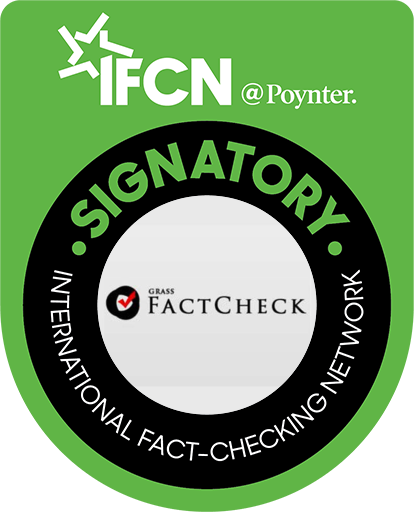In accordance with the data of the National Statistics Office of Georgia, the share of the population living below the absolute poverty line in Georgia decreased by 3.8 percentage points in 2021 and is now 17.5%. This is the biggest leap of improvement vis-à-vis the poverty level in Georgia in recent years.
FactCheck analysed the factors which stipulated the reduction of the poverty level in the country.
Firstly, it should be clarified that absolute poverty shows the part of the population which lives below the subsistence minimum. Of note is that a large segment of the Georgian population is extremely vulnerable and close to the poverty line. In other words, a large part of the population which currently does not live in absolute poverty faces the risk of impoverishment. The economic crisis amid the pandemic strongly hit the population close to the poverty line and the share of the population living below the absolute poverty line increased by 1.8 percentage points in 2020 alone.
In 2021, the poverty level decreased by two percentage points as compared to pre-pandemic 2019. Poverty reduction was largely stipulated by the growth of social transfers instead of revenues from economic activity. This is proven by the fact that the employment parameters deteriorated sharply amid the pandemic and the unemployment rate increased by 2.1 percentage points in 2021 alone. Nevertheless, the poverty rate in Georgia has dropped drastically.
Social aid strongly affects the reduction of absolute poverty because a person is not statistically considered to be poor if he has a subsistence minimum needed to survive. Poverty reduction in 2021 is largely attributable to the growth of the number of subsistence minimum recipients, the growth of cash assistance for children and other social benefits.
Graph 1: Share of Population Living Below the Absolute Poverty Line (%)

Source: National Statistics Office of Georgia
As reported by the Social Service Agency, the number of socially vulnerable people (recipients of subsistence minimum) in the country reached a historic high at the end of 2021. The number of cash social assistance recipients was growing monthly during the pandemic. In 2020-2021, the number of cash assistance recipients increased by 215,794 (54,797 families) in total. The fact that there was a record high number of applications from people to register as social assistance recipients indicates that the population’s social well-being worsened drastically during the pandemic (2020-2021).
In addition, cash assistance for children has doubled since July 2021 and the group of beneficiaries was also expanded. In particular, families with less than 120,000 rating points collect assistance for children under the age of 16 years whilst such assistance was previously disbursed to families with less than 100,000 rating points. Naturally, this was directly reflected on the reduction of child poverty.
In 2021, the number of pension recipients also increased. There were 793,751 pensioners in December 2021 which is 10,046 more as compared to the same period of the previous year. In addition, the amount of pension also increased which might have had a certain effect in reducing poverty among people over 60 years of age.
Certainly, FactCheck would not rule out that the revenues from economic activities had a role in reducing poverty. However, the available data enable us to say that the record high growth of cash social assistance recipients and other social transfers resulted in a significant decrease of the share of the population living in absolute poverty (below the subsistence minimum).
A natural way to reduce poverty is through rapid economic development and accompanying job growth which in turn lead to the growth of the population’s incomes. According to the World Bank’s information, revenues from economic activities had a strong effect on the reduction of poverty in Georgia in 2011-2015. Social transfers (cash assistance) have a quicker but a short-lived effect on poverty figures. That part of population which at a given moment manages to escape from absolute poverty through the transfers will still remain as a vulnerable group.







